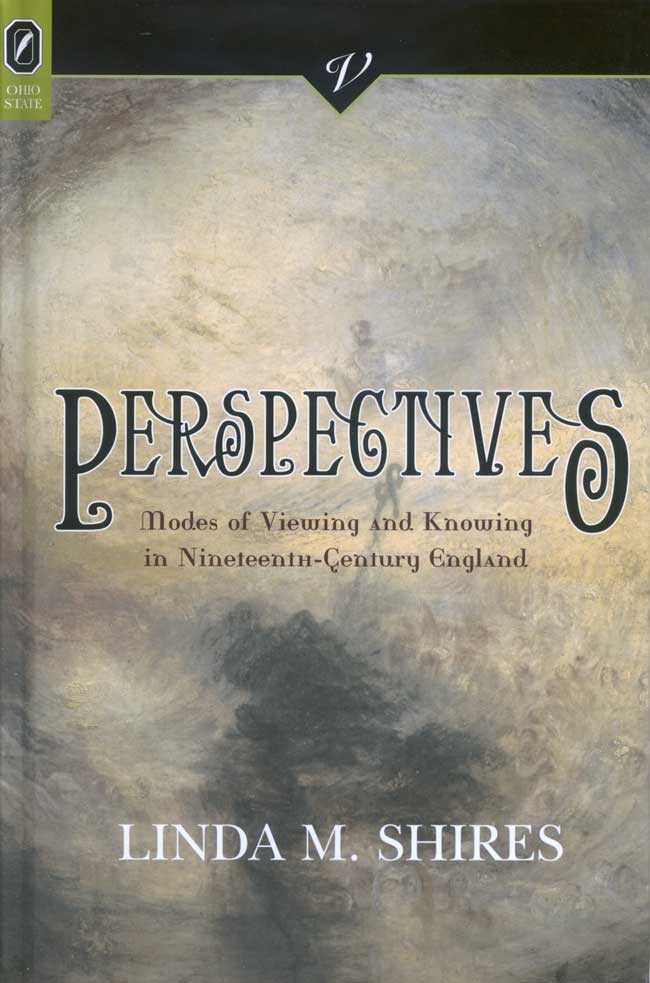PerspectivesModes of Viewing and Knowing in Nineteenth-Century EnglandLinda M. ShiresVictorian Critical Interventions |
 7/15/2009 Literary Criticism/European/English 157 pp. 6x9  $69.95 cloth 978-0-8142-1097-0 Add cloth to shopping cart $14.95 CD 978-0-8142-9193-1 Add CD to shopping cart Shopping Cart Instructions Review/Change Shopping Cart & Check-out | |||
|
Explore More Turner’s Gallery (Tate Britain) The Complete Writings and Pictures of Dante Gabriel Rossetti Henry Peach Robinson, from A History of Photography by Robert Leggat |
“Linda Shires’ excellent book is a rare example of a text at once accessible to students and informative to scholars. Her use of case studies is key to the pedagogical opportunities of this book. Her analyses are profound, but not limited—she manages to go from specific works to tantalizing broader implications without losing her attention to historical and formal considerations.” —Visual Culture in Britain “Written simply enough to be accessible to inexperienced readers, this informative book connects literary and pictorial narrative in studying ‘the cultural revaluation of the relationship of subject to object taking place from the 1830s through the 1870s’ . . . a useful resource.” —Choice “Perspectives is not a study of poetry alone but an ambitious look at a variety of Victorian genres, including painting and photography, all from the point of view of point of view, or perspective. Taken together, Shires’s expositions provide an excellent road map for how to expand this practice to other works of the period, indeed of other periods as well. Her readings are very well informed and demonstrate her abilities as a theoretical thinker who can approach texts from many points of view.” —John Maynard, professor of English, New York University “Theoretically sophisticated and multi-disciplinary in approach, Perspectives takes a fresh look at questions of perception and point of view in a variety of early- and mid-Victorian verbal and visual texts. Usefully polemical in its challenge to accepted ‘rupture’ narratives of the rise of Modernism, Linda Shires’s book provides excellent detailed readings of paintings, poems, photographs, and novels in support of its multi-faceted argument. Critics who have called for a new ‘strategic formalism’ will find here an example of it at its best.” —John O. Jordan, professor of literature, University of California, Santa Cruz “This pioneering examination of formal experiments with perspective in the visual and verbal arts heralds a new, multi-generic approach to the interdisciplinary study of nineteenth-century culture that takes interart scholarship beyond the comparative model. Historically, theoretically, and analytically astute, Linda M. Shires’s book will be essential and provocative reading for all those interested in Victorian visual and literary forms, their innovative ways of seeing and knowing, and their interpretive demands on a mobile, interactive, reader-viewer.” —Lorraine Janzen Kooistra, author of Christina Rossetti and Illustration: A Publishing History Perspectives: Modes of Viewing and Knowing in Nineteenth-Century England reopens the question of classical perspective and its vicissitudes in aesthetic practice with a focus on texts of the 1830s to the end of the 1870s. Linda M. Shires demonstrates why and how artists and writers across media experimented with techniques of dissolution, combination, and multiple viewpoints much earlier in the century than intellectual historians generally assume. Arguing for a relationship between what she calls the disappearing “I” in poetry, a compromised omniscience, and the testing of a mastering eye in painting and photography, Shires argues that art forms themselves, rather than new technologies alone, reshaped the period by educating readers and viewers into new ways of knowing. In chapters on visual and verbal art and a waning theocentrism; D.G. Rossetti; Henry Peach Robinson and Lady Clementina Hawarden; and Robert Browning, Wilkie Collins, and George Eliot, Shires revitalizes the currently available scholarship on connections among nineteenth-century art forms. This interdisciplinary study offers nuanced, close readings in order to rebut assertions of delayed artistic responses to the decreasing influence of traditional perspective. It shows how vision is bound up with all the senses of a viewer and it supports current concepts of modernism as transitional, rather than radical.
| |||

